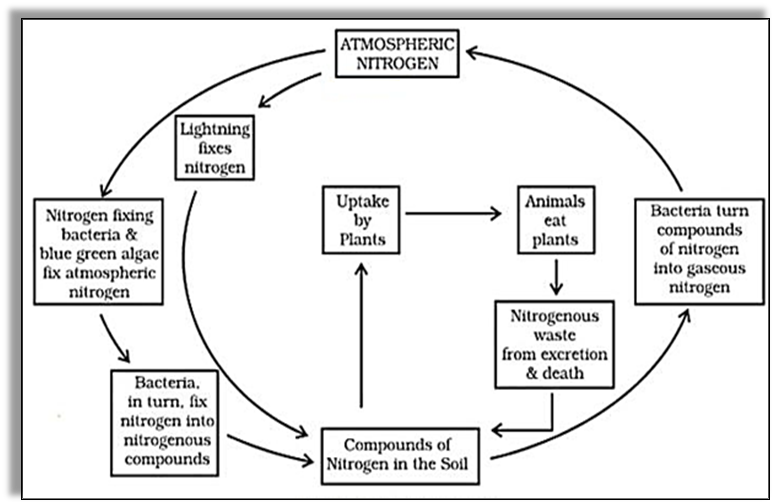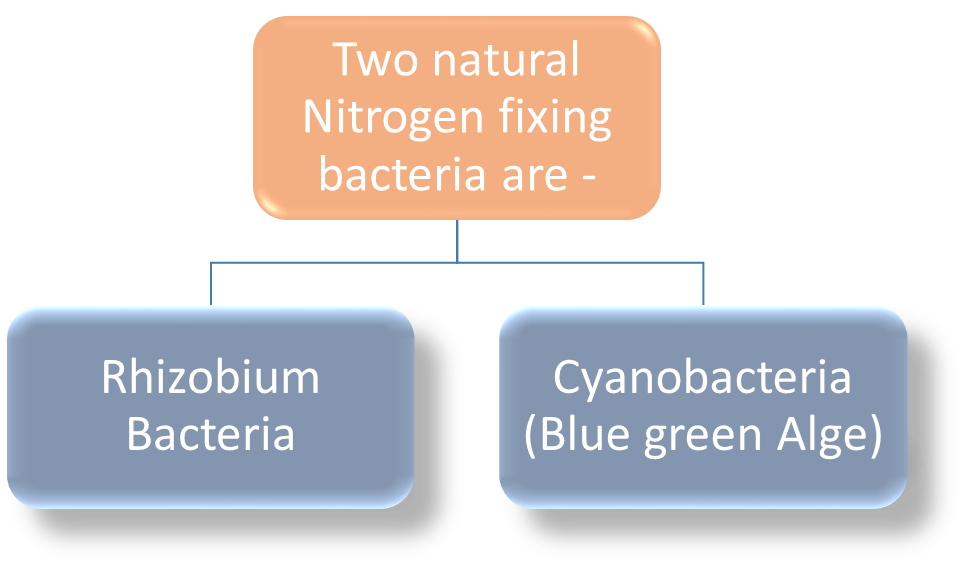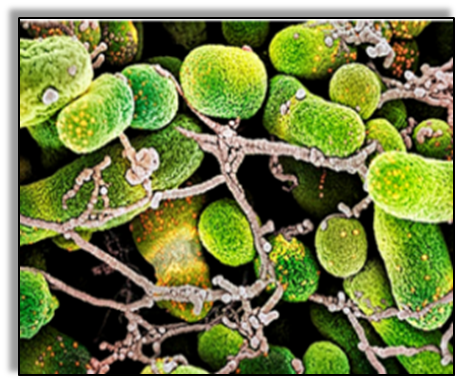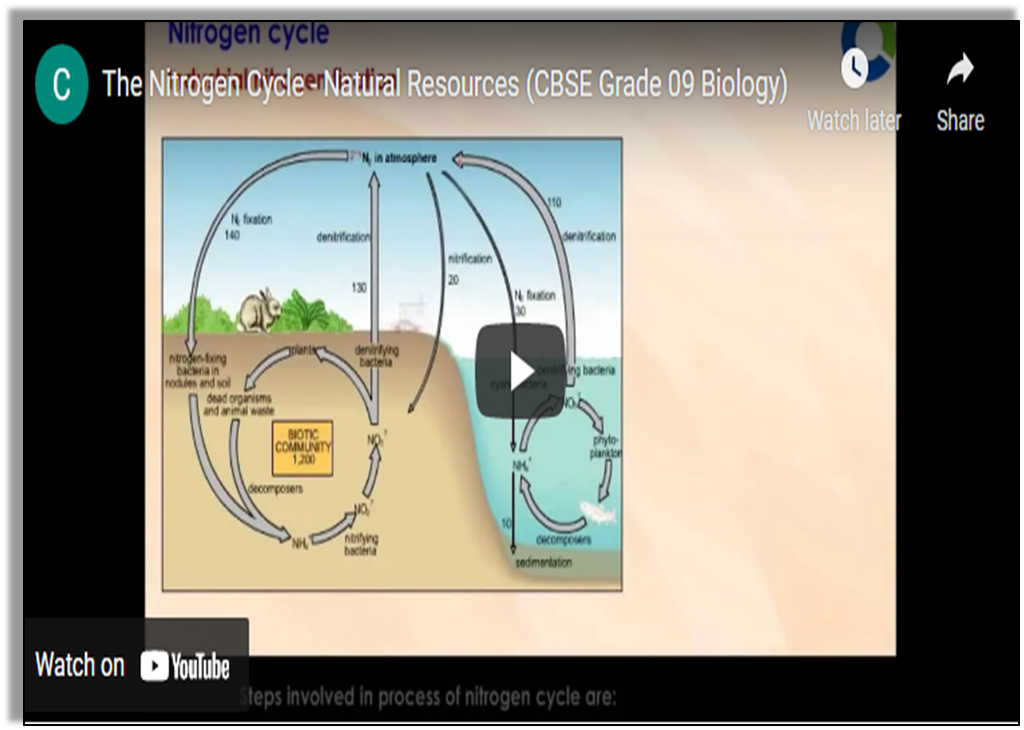- Books Name
- Class-8 Science Book
- Publication
- PathSet Publications
- Course
- CBSE Class 8
- Subject
- Science
Nitrogen Cycle
Nitrogen is cycled naturally by living organisms through the ‘nitrogen cycle’. It is one of the crucial natural processes to sustain living organisms. When plants and animals die, bacteria and fungi present in the soil convert the nitrogenous wastes into nitrogenous compounds to be used by plants again. Certain other bacteria convert some part of them to nitrogen gas which goes back into the atmosphere. As a result, the percentage of nitrogen in the atmosphere remains more or less constant.
Nitrogen constitutes 78% of our atmosphere. In living organisms, it is found in:
- Proteins,
- Nucleic Acids,
- Chlorophyll, and
- Vitamins.
Atmospheric nitrogen cannot be used directly by plants and animals. It gets fixed by either lightning or natural nitrogen fixers.

Why Nitrogen Cycle?
We are generally under the impression that we only need oxygen to live. Well, you couldn’t be more wrong! There is a laundry list of elements that animals need for survival. One such element is Nitrogen but we can’t just get nitrogen from the air. It needs to be converted to nitrates, via a process called the nitrogen cycle. So let us learn more about this fascinating concept. The air we breathe contains 78% nitrogen, 21% oxygen and the remaining are other trace gases. The nitrogen component of air is inert. So this means plants and animals cannot use it directly. To be able to use nitrogen, plants convert atmospheric nitrogen to nitrates, nitrites and ammonia compounds by a process called the nitrogen cycle. Animals derive their nitrogen requirements from plants.
What are the steps involved in the nitrogen cycle?
The nitrogen cycle consists of four main steps namely:
- Nitrogen Fixation
- Ammonification/ Decay
- Nitrification
- De-nitrification
It is important to note that microorganisms play an important role in each of these steps.



Nitrogen Cycle

A step-by-step explanation of Nitrogen Cycle
- Nitrogen Fixation: Atmospheric nitrogen is converted by lightning or certain bacteria like Rhizobium, Azotobacter and blue-green algae (present in the soil) into compounds usable by plants.
- Nitrification: Ammonia conversion into nitrites by Nitrosomonas and further conversion of nitrites into nitrates by Nitrobacter. Plants take up nitrogen in form of ammonia or nitrates.
- Assimilation: Roots of plants absorb these nitrogenous compounds from soils and plants use them to synthesize proteins and other compounds. Animals feeding on plants get these proteins and nitrogen compounds.
- Ammonification: When plants and animals die, bacteria and fungi present in the soil convert the nitrogenous wastes into compounds that can be used by plants again.
- Denitrification: Nitrates can be converted into nitrogen gas which is released back into the atmosphere by certain bacteria. Eg. Pseudomonas.
Hence, atmospheric nitrogen remains constant.
Here’s a video for you: https://youtu.be/4lWcf_6wKy8


 PathSet Publications
PathSet Publications
